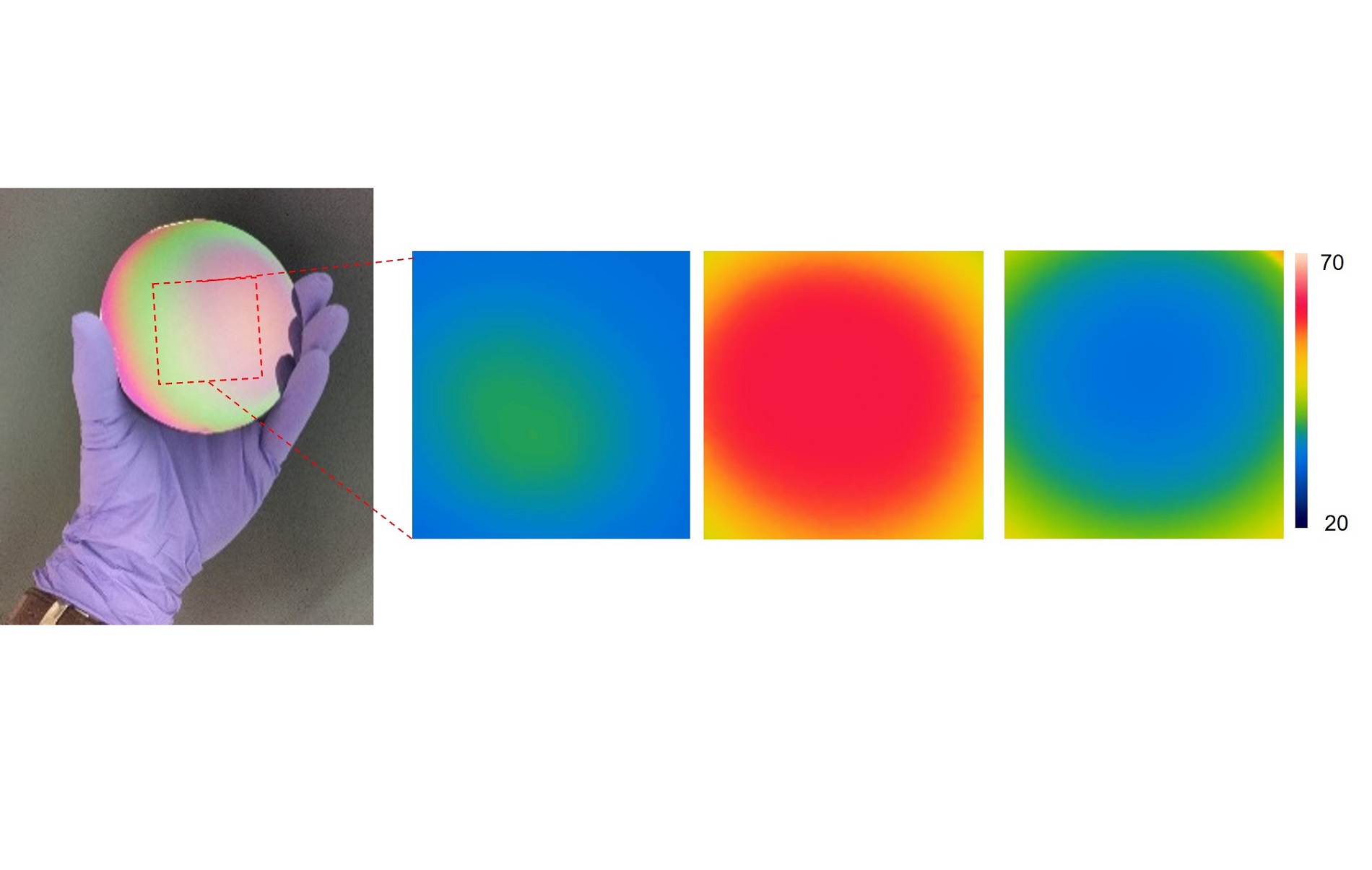7 June 2024
The University of Manchester’s National Graphene Institute has spearheaded an international team to engineer a novel approach for controlling thermal emission, detailed in a paper published in Science. This breakthrough offers new design strategies beyond conventional materials, with promising implications for thermal management and camouflage technologies.
The international team, which also included Penn State College of Engineering, Koc University in Turkey and Vienna University of Technology in Austria, has developed a unique interface that localises thermal emissions from two surfaces with different geometric properties, creating a “perfect” thermal emitter. This platform can emit thermal light from specific, contained emission areas with unit emissivity.
Professor Coskun Kocabas, professor of 2D device materials at The University of Manchester, explains, “We have demonstrated a new class of thermal devices using concepts from topology — a branch of mathematics studying properties of geometric objects — and from non-Hermitian photonics, which is a flourishing area of research studying light and its interaction with matter in the presence of losses, optical gain and certain symmetries.”
The team said the work could advance thermal photonic applications to better generate, control and detect thermal emission. One application of this work could be in satellites, said co-author Prof Sahin Ozdemir, professor of engineering science and mechanics at Penn State. Faced with significant exposure to heat and light, satellites equipped with the interface could emit the absorbed radiation with unit emissivity along a specifically designated area designed by researchers to be incredibly narrow and in whatever shape is deemed necessary.
Getting to this point, though, was not straight forward, according to Ozdemir. He explained part of the issue is to create a perfect thermal absorber-emitter only at the interface while the rest of the structures forming the interface remains ‘cold’, meaning no absorption and no emission.
“Building a perfect absorber-emitter—a black body that flawlessly absorbs all incoming radiation—proved to be a formidable task,” Ozdemir said. However, the team discovered that one can be built at a desired frequency by trapping the light inside an optical cavity, formed by a partially reflecting first mirror and a completely reflecting second mirror: the incoming light partially reflected from the first mirror and the light which gets reflected only after being trapped between the two mirrors exactly cancel each other. With the reflection thus being completely suppressed, the light beam is trapped in the system, gets perfectly absorbed, and emitted in the form of thermal radiation.
To achieve such an interface, the researchers developed a cavity stacked with a thick gold layer that perfectly reflects incoming light and a thin platinum layer that can partially reflect incoming light. The platinum layer also acts as a broadband thermal absorber-emitter. Between the two mirrors is a transparent dielectric called parylene-C.
The researchers can adjust the thickness of the platinum layer as needed to induce the critical coupling condition where the incoming light is trapped in the system and perfectly absorbed, or to move the system away from the critical coupling to sub- or super-critical coupling where perfect absorption and emission cannot take place.
“Only by stitching two platinum layers with thicknesses smaller and larger than the critical thickness over the same dielectric layer, we create a topological interface of two cavities where perfect absorption and emission are confined. Crucial here is that the cavities forming the interface are not at critical coupling condition,” said first author M. Said Ergoktas, a research associate at The University of Manchester
The development challenges conventional understanding of thermal emission in the field, according to co-author Stefan Rotter, professor of theoretical physics at the Vienna University of Technology, “Traditionally, it has been believed that thermal radiation cannot have topological properties because of its incoherent nature.”
According to Kocabas, their approach to building topological systems for controlling radiation is easily accessible to scientists and engineers.
“This can be as simple as creating a film divided into two regions with different thicknesses such that one side satisfies sub-critical coupling, and the other is in the super-critical coupling regime, dividing the system into two different topological classes,” Kocabas said.
The realised interface exhibits perfect thermal emissivity, which is protected by the reflection topology and “exhibits robustness against local perturbations and defects,” according to co-author Ali Kecebas, a postdoctoral scholar at Penn State. The team confirmed the system’s topological features and its connection to the well-known non-Hermitian physics and its spectral degeneracies known as exceptional points through experimental and numerical simulations.
“This is just a glimpse of what one can do in thermal domain using topology of non-Hermiticity. One thing that needs further exploration is the observation of the two counterpropagating modes at the interface that our theory and numerical simulations predict,” Kocabas said.
The National Graphene Institute (NGI) is a world-leading graphene and 2D material centre, focussed on fundamental research. Based at The University of Manchester, where graphene was first isolated in 2004 by Professors Sir Andre Geim and Sir Kostya Novoselov, it is home to leaders in their field – a community of research specialists delivering transformative discovery. This expertise is matched by £13m leading-edge facilities, such as the largest class 5 and 6 cleanrooms in global academia, which gives the NGI the capabilities to advance underpinning industrial applications in key areas including: composites, functional membranes, energy, membranes for green hydrogen, ultra-high vacuum 2D materials, nanomedicine, 2D based printed electronics, and characterisation.





